Water world: a mesmerising installation by Bureau de Change unfurls
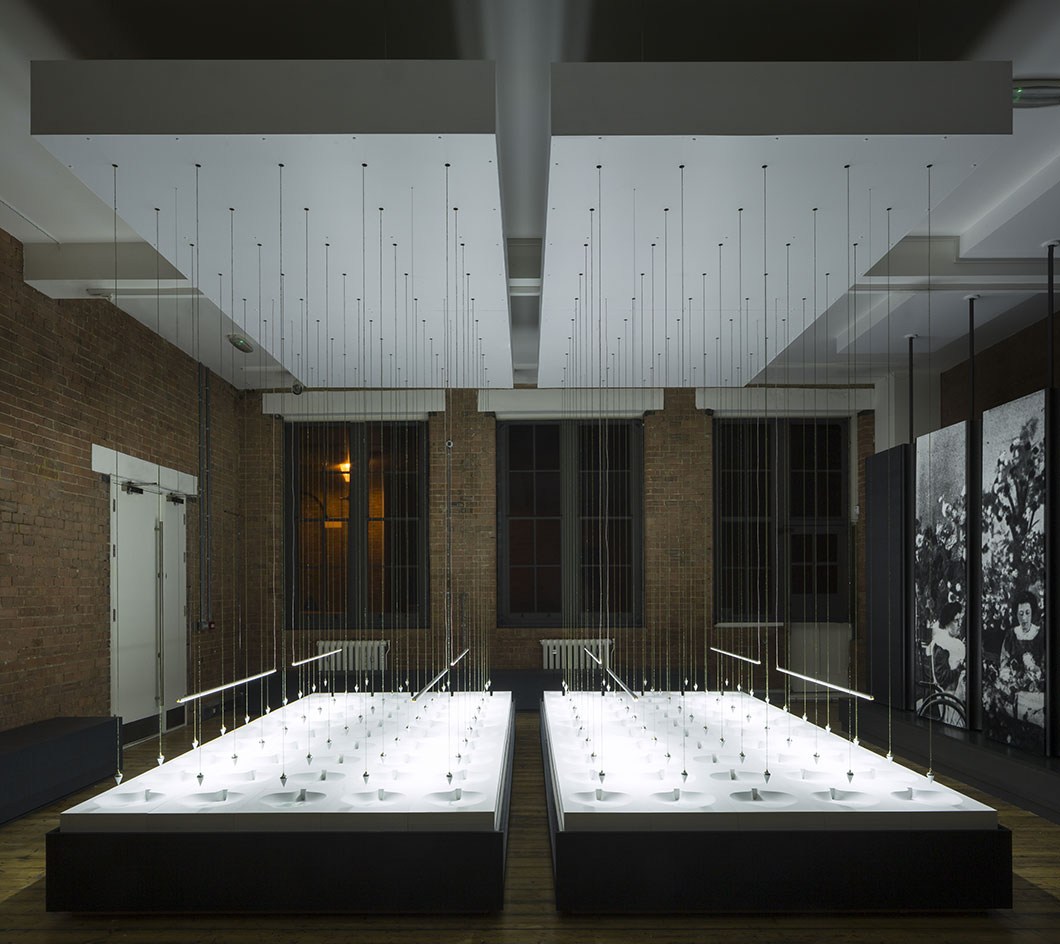
Bringing together Clerkenwell’s rich industrial history and the Sto Group's range of IQ façade finishes, dynamic young architecture practice Bureau de Change has just unveiled a captivating installation at the manufacturer’s London gallery space, Sto Werkstatt.
Entitled ‘Droplet’, the piece is a ‘sensorial’ installation, explain the architecture firm’s directors, Billy Mavropoulos and Katerina Dionysopoulou. ‘The main challenge of the brief was how we could utilise a product whose "magic" effect is essentially invisible,’ adds Dionysopoulou. ‘The installation sets up a "compare and contrast" scenario, whereby the IQ coating can be seen working in a live way.’
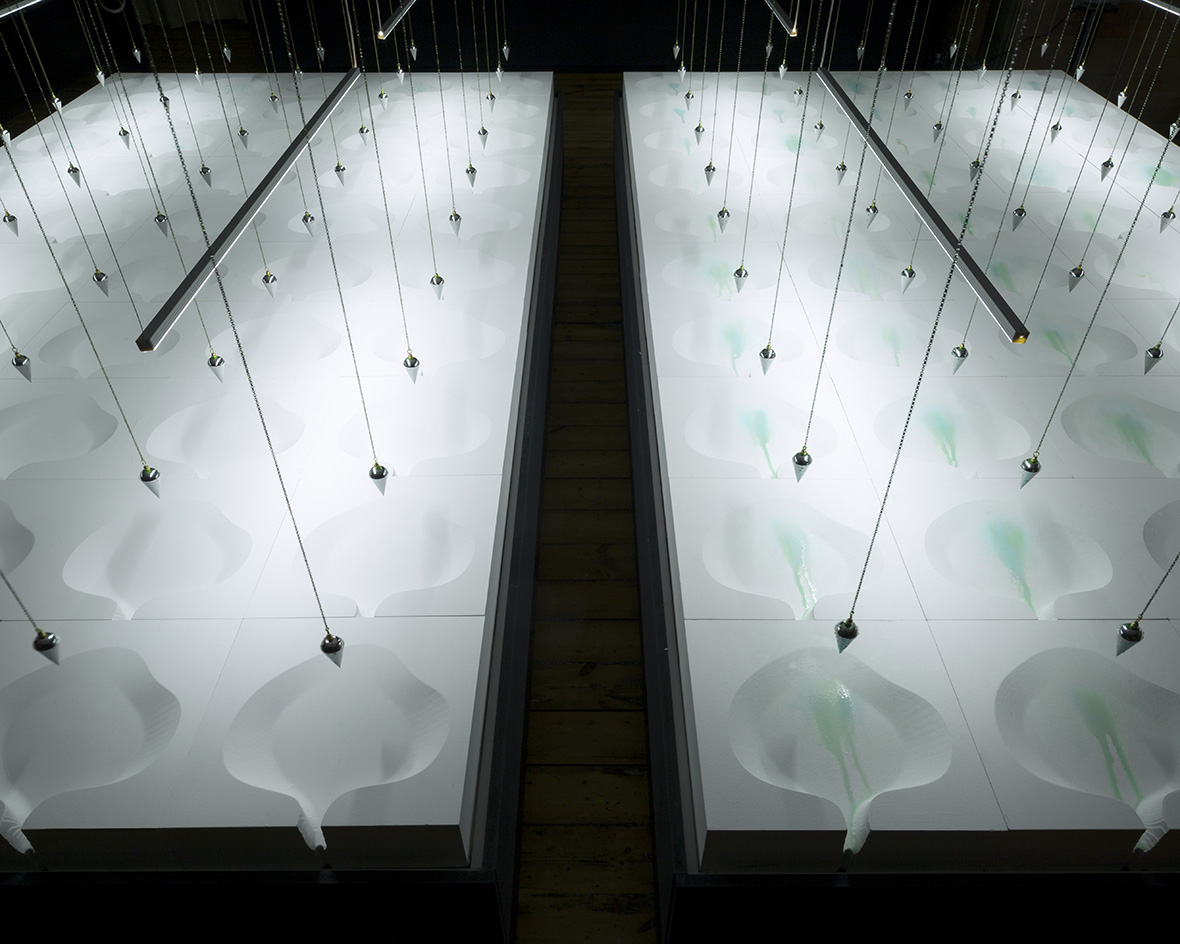
Installation view of 'Droplet'.
A visit does not disappoint. The display, arranged in a grid formation, consists of 100 elegantly made pendulums and a three-dimensional surface of 100 petal-like forms below them. Tinted water drips down the pendulums’ chains onto the sculptural carved forms underneath – which are CNC'd from Sto’s lightweight façade material Verolith – creating an ever-changing pattern within this calmly energetic piece. A soundtrack of water dripping completes the effect.
'We are using a set of the company’s intelligent paints – one that repels water and one that doesn't,' explains Mavropoulos. ‘The texture of the water-repellent pain replicates properties of the lotus plant, which allows water to glide over it smoothly.’
The site-specific installation also drew on the Sto building’s history, which at the end of the 1800s and beginning of the 1900s was part of the John Groom Foundation, which employed disadvantaged women in flower-making (creating flowers out of textiles was big business in London at the time).
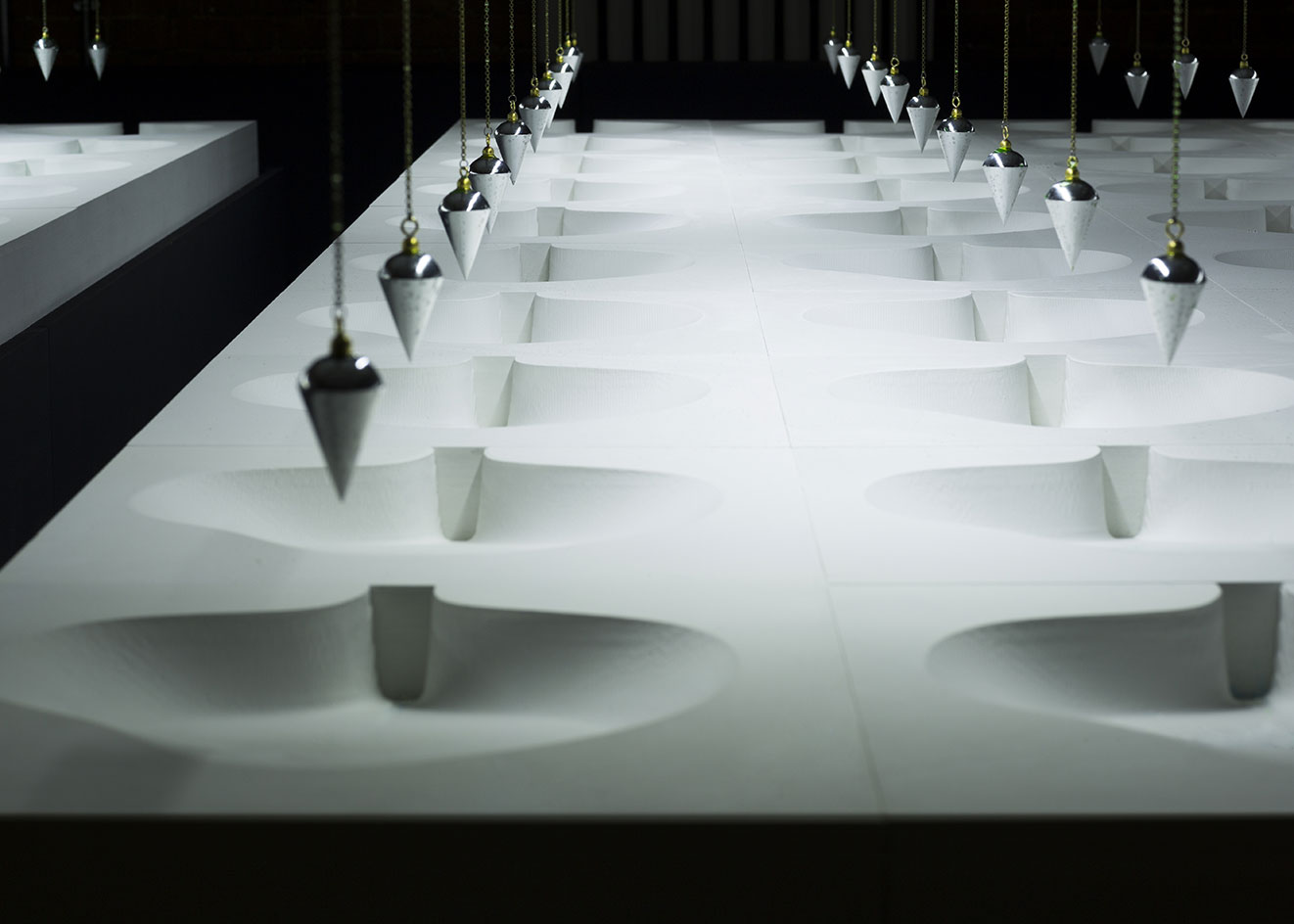
The installation's base is CNC'd into a pattern of lotus leaves, referencing the way the plant interacts with water.
'We worked with the Metropolitan Archives, which are situated around the corner, and borrowed their flower-making tools, which we 3D-scanned and 3D-printed to display them here,' continues Mavropoulos. ‘These helped inspire the petal shapes in the installation. Even the pendulums refer back to Clerkenwell’s history and specifically its long tradition in clock-making.’
The multi-layered show aims to unfold the area’s different historic layers, while offering a dynamic display that engages the visitor, and an inspiring showcase of Sto’s cutting-edge product.

The exhibition shows delicate pendulums hanging from the ceiling. These guide tinted water that drops onto a leaf-inspired three-dimensional base below, creating patterns
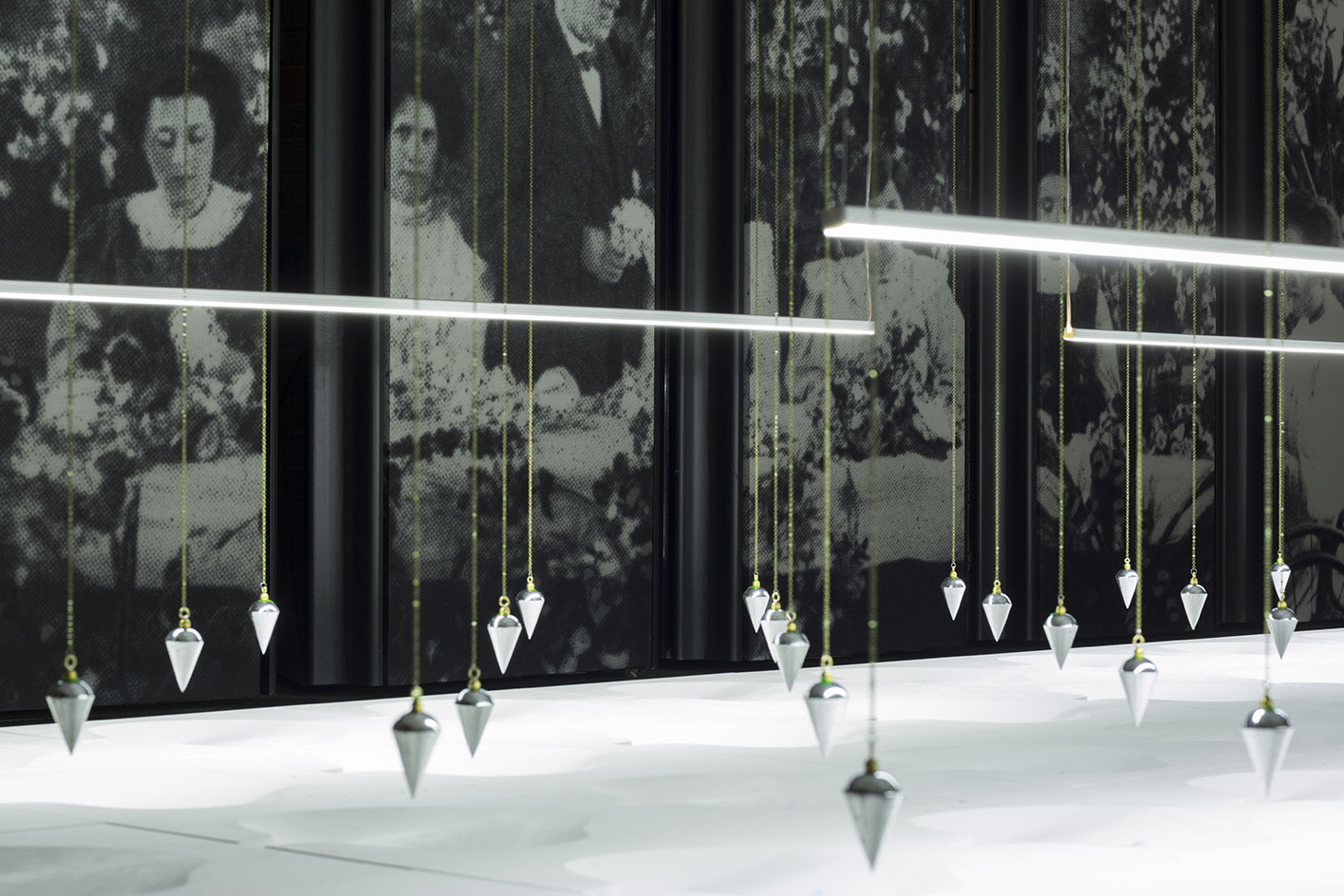
The architects tapped into the area's history and specifically the Sto Werkstatt building's history as a flower-making facility in Victorian times
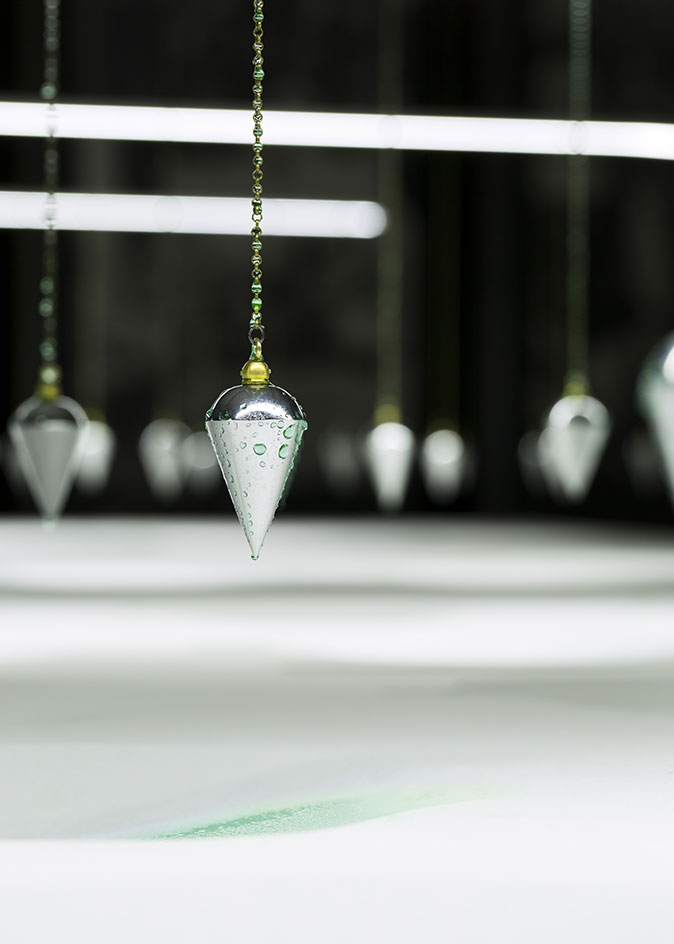
Two types of tinted water are used – one that is completely water resistant, and one that isn't, emphasising the different effect each creates
INFORMATION
’Droplet’ is on view until 16 December. For more information, visit the Sto Werkstatt London website
ADDRESS
Sto Werkstatt
7–9 Woodbridge Street
London EC1R 0LL
Wallpaper* Newsletter
Receive our daily digest of inspiration, escapism and design stories from around the world direct to your inbox.
Ellie Stathaki is the Architecture & Environment Director at Wallpaper*. She trained as an architect at the Aristotle University of Thessaloniki in Greece and studied architectural history at the Bartlett in London. Now an established journalist, she has been a member of the Wallpaper* team since 2006, visiting buildings across the globe and interviewing leading architects such as Tadao Ando and Rem Koolhaas. Ellie has also taken part in judging panels, moderated events, curated shows and contributed in books, such as The Contemporary House (Thames & Hudson, 2018), Glenn Sestig Architecture Diary (2020) and House London (2022).
-
 The Subaru Forester is the definition of unpretentious automotive design
The Subaru Forester is the definition of unpretentious automotive designIt’s not exactly king of the crossovers, but the Subaru Forester e-Boxer is reliable, practical and great for keeping a low profile
By Jonathan Bell
-
 Sotheby’s is auctioning a rare Frank Lloyd Wright lamp – and it could fetch $5 million
Sotheby’s is auctioning a rare Frank Lloyd Wright lamp – and it could fetch $5 millionThe architect's ‘Double-Pedestal’ lamp, which was designed for the Dana House in 1903, is hitting the auction block 13 May at Sotheby's.
By Anna Solomon
-
 Naoto Fukasawa sparks children’s imaginations with play sculptures
Naoto Fukasawa sparks children’s imaginations with play sculpturesThe Japanese designer creates an intuitive series of bold play sculptures, designed to spark children’s desire to play without thinking
By Danielle Demetriou
-
 This 19th-century Hampstead house has a raw concrete staircase at its heart
This 19th-century Hampstead house has a raw concrete staircase at its heartThis Hampstead house, designed by Pinzauer and titled Maresfield Gardens, is a London home blending new design and traditional details
By Tianna Williams
-
 An octogenarian’s north London home is bold with utilitarian authenticity
An octogenarian’s north London home is bold with utilitarian authenticityWoodbury residence is a north London home by Of Architecture, inspired by 20th-century design and rooted in functionality
By Tianna Williams
-
 What is DeafSpace and how can it enhance architecture for everyone?
What is DeafSpace and how can it enhance architecture for everyone?DeafSpace learnings can help create profoundly sense-centric architecture; why shouldn't groundbreaking designs also be inclusive?
By Teshome Douglas-Campbell
-
 The dream of the flat-pack home continues with this elegant modular cabin design from Koto
The dream of the flat-pack home continues with this elegant modular cabin design from KotoThe Niwa modular cabin series by UK-based Koto architects offers a range of elegant retreats, designed for easy installation and a variety of uses
By Jonathan Bell
-
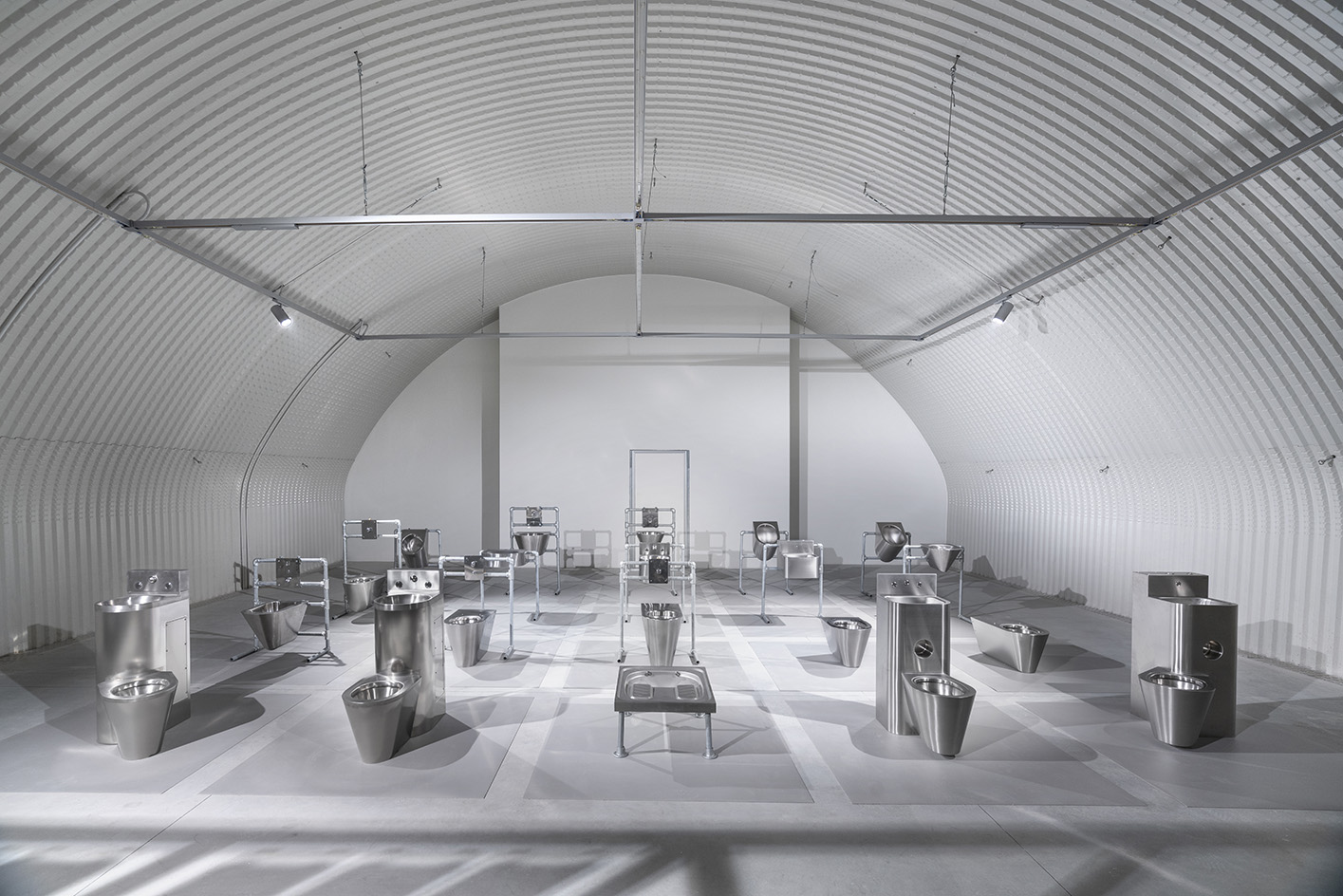 Milan Design Week: Dropcity challenges detention space design with 'Prison Times'
Milan Design Week: Dropcity challenges detention space design with 'Prison Times'Dropcity's inaugural exhibition 'Prison Times – Spatial Dynamics of Penal Environments', opens a few days before the launch of Milan Design Week and discusses penal environments and their spatial design
By Ellie Stathaki
-
 Are Derwent London's new lounges the future of workspace?
Are Derwent London's new lounges the future of workspace?Property developer Derwent London’s new lounges – created for tenants of its offices – work harder to promote community and connection for their users
By Emily Wright
-
 Showing off its gargoyles and curves, The Gradel Quadrangles opens in Oxford
Showing off its gargoyles and curves, The Gradel Quadrangles opens in OxfordThe Gradel Quadrangles, designed by David Kohn Architects, brings a touch of playfulness to Oxford through a modern interpretation of historical architecture
By Shawn Adams
-
 A Norfolk bungalow has been transformed through a deft sculptural remodelling
A Norfolk bungalow has been transformed through a deft sculptural remodellingNorth Sea East Wood is the radical overhaul of a Norfolk bungalow, designed to open up the property to sea and garden views
By Jonathan Bell